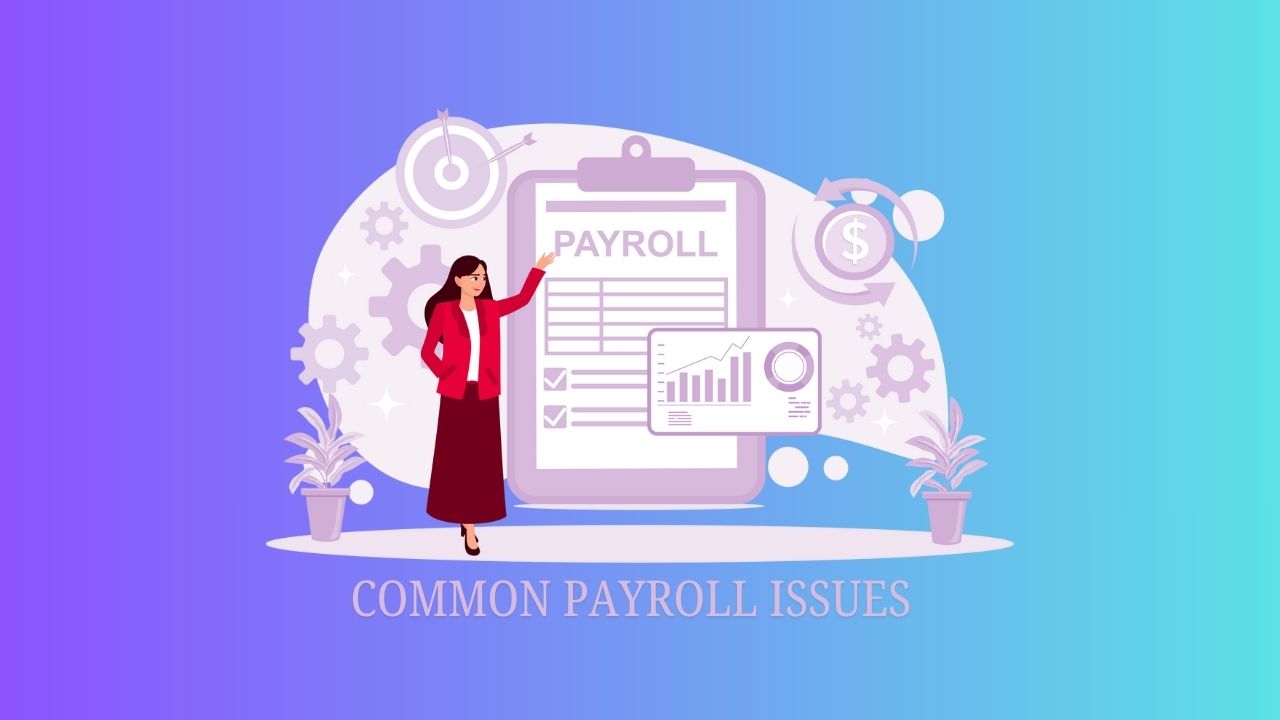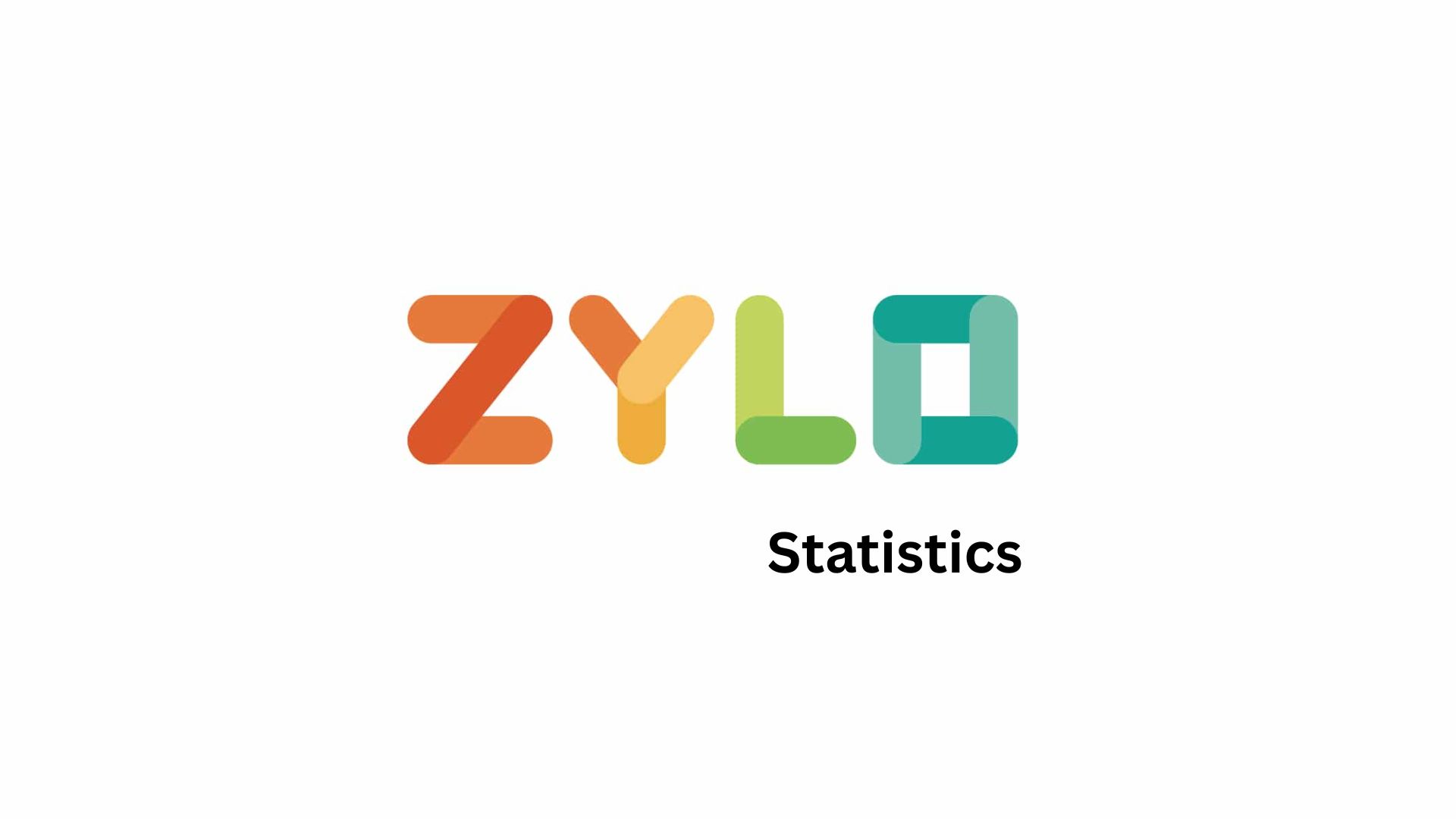Adobe Premiere Pro vs Final Cut Pro Statistics – Which One is Better? (2025)
Updated · Aug 30, 2025
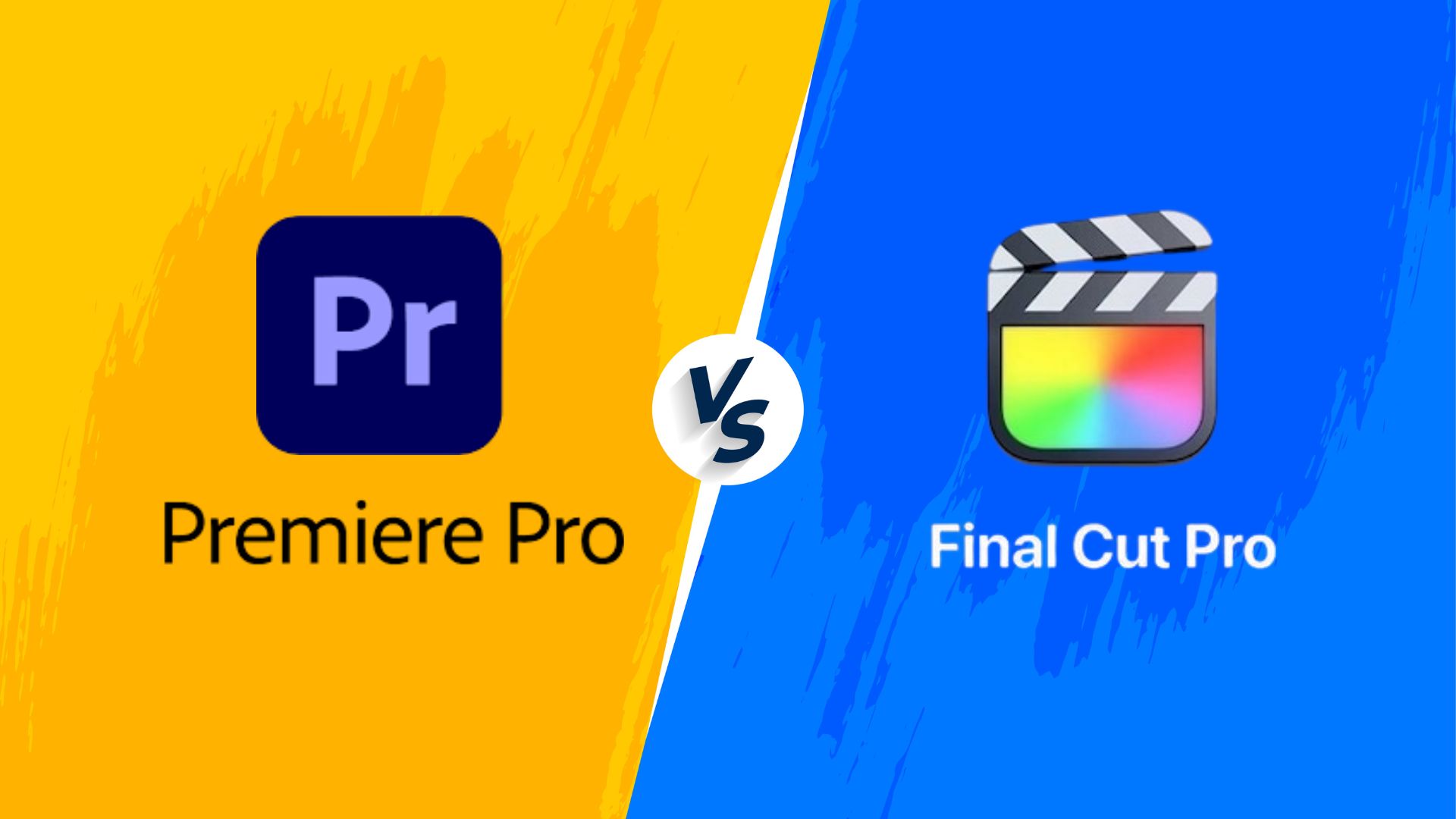
Table of Contents
Introduction
Adobe Premiere Pro vs Final Cut Pro Statistics: In the fabulous year of 2024, the two leading giants in video editing are Adobe Premiere Pro and Apple’s Final Cut Pro. By assessing each video editing software through the lenses of market shares, target audiences, pricing models, performances, and industry reputations, it will be easier to immediately see how each performs and who stands to benefit most from a particular software.
The present article on Adobe Premiere Pro vs Final Cut Pro statistics, therefore, ventures into the realm of numbers, percentages, earnings, and citations to provide a somewhat clear picture, aided heavily by data, for professional and hobbyist video editors.
Editor’s Choice
- Adobe Premiere Pro controls the global video editing market with a 35% market share, whereas Final Cut Pro rates only at 25%, emphasising Premiere’s broader use.
- Final Cut currently holds sway with creative authorities in the media production sector, with 1,810 in that sphere against 1,039 for Premiere Pro, clarifying that Final Cut is hand-in-hand with actual content manufacturing.
- Final Cut Pro is picked for one-time purchase at US$299, appealing to customers who are averse to long-term expenditures; Premiere Pro charges a subscription fee of US$37.99 per month, which adds up to roughly US$456 a year.
- Final Cut Pro cruised on Apple Silicon (M1, M2), while Premiere carried the comparatively slower pace on that hardware but promotes itself as a dual backend solution endorsed by both Windows and macOS to give users greater acceptance.
| Brand |
Estimated Market Share
|
| Adobe Premiere Pro | 35% |
| Final Cut Pro X | 25% |
| DaVinci Resolve | 15% |
| Avid Media Composer | 10% |
| Filmora | 5% |
| CapCut | 4% |
| iMovie | 3% |
| Vegas Pro | 3% |
| CyberLink PowerDirector | 2% |
| Other (including smaller players & niche software) | 20% |
(Source: sendshort.ai)
- Adobe Premiere Pro is the market leader for video editing, accounting for 35% of users. It is the first choice, especially due to its professional-grade editing tools and seamless integration with other Adobe Creative Cloud applications.
- Final Cut Pro X has 25%, mostly favoured by Mac users for its power, speed, and user-friendly interface.
- DaVinci Resolve stands at 15%, serving users who need great colour correction and who appreciate the quality that comes for free.
- Avid Media Composer holds a 10% market share and remains favoured by professional film and television production houses for its advanced collaborative features. With 5%, Filmora goes for beginners and intermediates who want a simple yet capable platform.
- CapCut is grabbing more attention this year, with a 4% user mark, mostly embraced in the mobile content creator community and among social media influencers because of its easy usability and smartphone compatibility.
- About 3% each goes to the likes of iMovie and Vegas Pro. iMovie is an extremely simple tool for Apple device users, whereas Vegas Advanced caters to those wanting more serious editing without stepping into full enterprise territory.
- Accounting for about 2% of the market, CyberLink PowerDirector is a budget-friendly solution that provides users with a wide variety of tools.
- The remaining 20% market is carved out by the smaller and niche software platforms that serve specific industries or creative needs, evidencing that there is room for diversification when it comes to the taste of video editing.
Adobe Premiere Pro vs Final Cut Pro Usage By Companies
Adobe
| Company | Website | Country | Revenue |
Company Size
|
| Beachbody | beachbody.com | United States | 200M-1000M |
200-500
|
| UpGuard | upguard.com | United States | 10M-50M | 50-200 |
| Accenture PLC | accenture.com | Ireland | >1000M | >10000 |
| Chick-fil-A-Franchise | fly-the-coop.net | United States | >1000M | >10000 |
| MonkeySports, Inc. | monkeysports.com | United States | 50M-100M |
200-500
|
(Source: enlyft.com)
Final Cut Pro
| Company | Website | Country | Revenue |
Company Size
|
| Druva | druva.com | United States | 200M-1000M |
1000-5000
|
| improveit 360 | improveit360.com | United States | 1M-10M | 10-50 |
| DonorSearch | donorsearch.net | United States | 10M-50M | 50-200 |
| Earnest Operations LLC | meetearnest.com | United States | 100M-200M |
200-500
|
| The Goat | lcgoat.com | United States | 10M-50M |
200-500
|
(Source: enlyft.com)
- Adobe Premiere Pro ought to be there with Final Cut Pro among a range of companies of industries, sizes, and revenue brackets; however, this choice of tool may indicate an organisation’s wider needs and platform preference.
- Usually, Adobe Premiere Pro is found in big enterprises and organisations with diversified teams and large production requirements.
- An example is an Irish company, Accenture PLC, a global consulting firm with more than 10,000 employees and an annual revenue of over US$1 billion.
- They prefer Premiere Pro for obvious reasons of scalability across large teams and integration with other Creative Cloud applications.
- Similarly, the Chick-fil-A Franchise (fly-the-coop.net), a high-revenue entity employing more than 10,000 people across the United States, making use of Adobe Premiere Pro, presents the software as attractive to large-scale corporate users needing advanced functionality and collaborative workflows.
- Mid-sized companies such as Beachbody (beachbody.com) and MonkeySports, Inc. (monkeysports.com), being U.S.-based with revenues in the range of US$200M to US$1B and between 200 and 500 employees, also prefer Adobe Premiere Pro probably because of its powerful editing tools, motion graphics capacity, and support for multiple platforms.
- Final Cut Pro, on the other hand, is typically preferred by either mid-market or smaller businesses within Mac-centric environments.
- Druva (druva.com), a tech company located in the U.S. with revenues ranging between US$200M and US$1B and an employee headcount between 1,000 and 5,000, employs Final Cut Pro, most likely for its speed on Apple hardware and a one-time purchase price.
- Smaller companies such as improveit 360 (improveit360.com), having between 10 and 50 employees and annual revenue between US$1 million and US$10 million, use Final Cut Pro as well, implying cost-effectiveness and simplicity as primary factors in the decision. DonorSearch (donorsearch.net), Earnest Operations LLC (meetearnest.com), and The Goat (lcgoat.com)—three U.S. companies with revenues ranging from US$10M to US$100M and staff sizes between 50 and 500- make use of Final Cut Pro.
- These companies probably value more the speed, ease of use, and economical pricing that come with Final Cut Pro versus the subscription package that comes with Premiere Pro.
Industry Usage
Adobe Premiere Pro
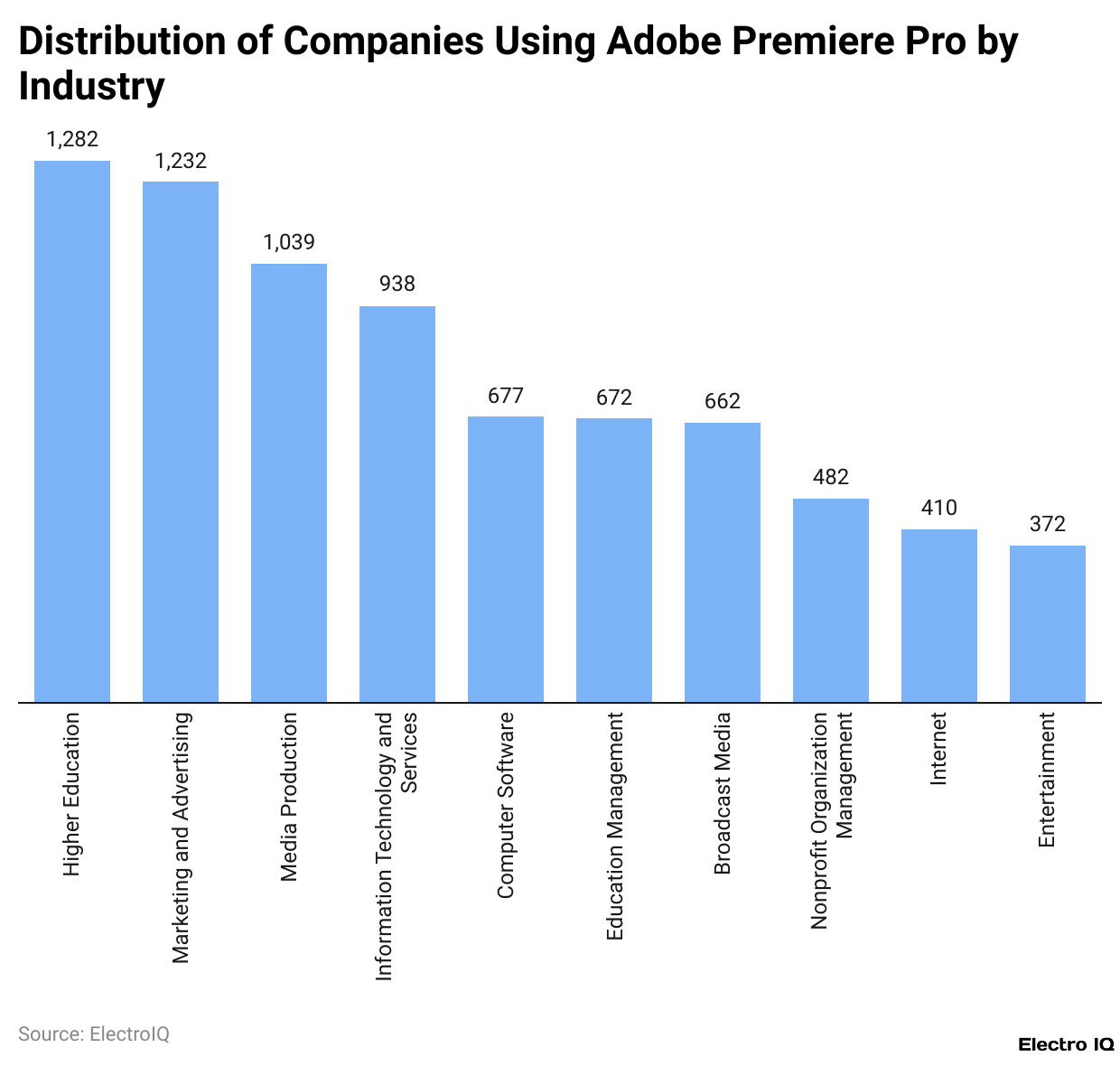
(Reference: enlyft.com)
Final Cut Pro
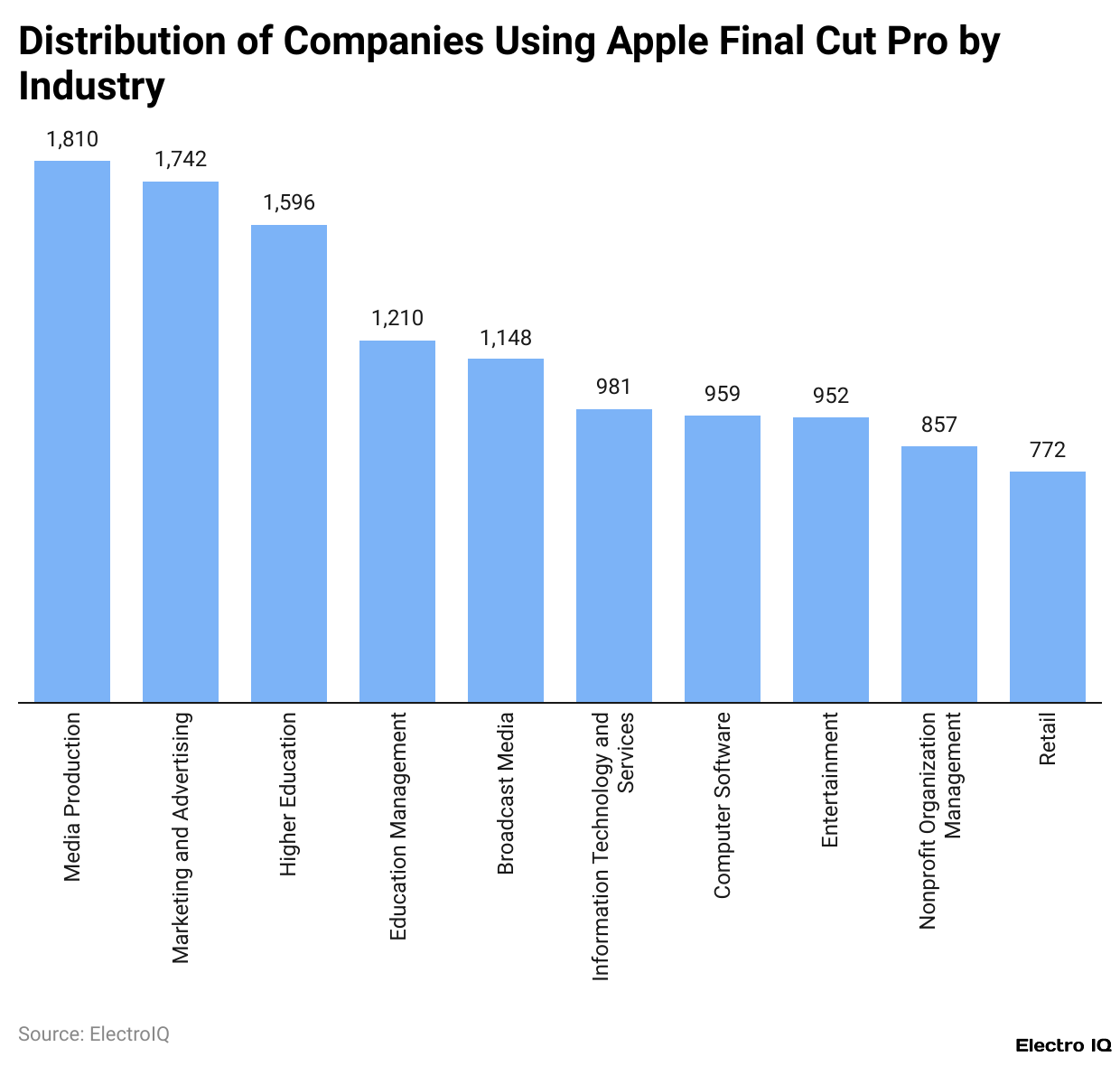
(Reference: enlyft.com)
- According to Enlyft, Adobe Premiere Pro vs Final Cut Pro statistics state that distinct sets of patterns emerge when industries are considered for Adobe Premiere Pro and Final Cut Pro usage.
- Premiere Pro is the highest used by higher education, with 1,282 users, followed very closely by marketing and advertising with 1,232. Media production, with 1,039 marks, is the third-strongest industry use in content creation.
- Other important industries include information technology and services with 938, computer software with 677, and education management with 672.
- Broadcast media with 662 users also have a strong role to play.
- Other industries show less but still relevant use with nonprofit organisation management at 482, internet sector at 410, and entertainment at 372, thereby showing the solubility of Premiere Pro in various industries.
- Comparatively, Final Cut Pro carries a significant preeminence in media production, with 1,810 users, thereby depicting a greater concentration toward the creative fields.
- Closely following, marketing and advertising include 1,742 users, while higher education comes in third with an adoption rate of 1,596. Education management is quite significant, with 1,210 users, more than that of Premiere Pro in the same field.
- Along with broadcast media (1,148), Final Cut Pro is also more extensively sought in IT and services (981) and computer software (959) than those of Adobe.
- Final Cut Pro is well entrenched in entertainment (952) and nonprofit organisation management (857), as well as retail (772), unlike Premiere Pro, where they do not show up as top industries.
Revenue And Monetization
- Premier Pro employs the subscription revenue generation model and is chiefly accountable for Adobe’s performance.
- In 2023, Adobe’s Digital Media segment generated nearly US$14.17 billion in revenue. It is further estimated that Premiere Pro would make approximately US$4.25 billion out of that, which would make up about 20 to 30% of the total earnings in that segment.
- This estimate stems from its wide application across industries and the regularity of monthly billing. The standard subscription plan for Premiere Pro goes for US$37.99 a month per user, which generates massive monthly recurring revenue when multiplied by millions of users.
- Final Cut Pro, on the other hand, offers a one-time purchase transaction. It is priced at a flat US$299 per license, with no charge for subscription membership. This instead makes revenue highly reliant on the purchase of new copies and upgrades.
- Although Apple didn’t make public the actual revenue from the software, it was said to have more than 2.5 million users back in 2018.
- If even half decided to purchase the current version or perform an upgrade, it would lead to revenue running into several hundred million.
- This difference in the ordinances by which one company runs its affairs, i.e., recurring versus one-time payments, sets up a pronounced contrast between how the two companies generate revenue from their respective video editing software.
Adobe Premiere Pro vs Final Cut Pro – Pros And Cons
- According to Techrepublic, Adobe Premiere Pro vs Final Cut Pro statistics show that Final Cut Pro requires a one-time purchase of US$299; it is lauded for its cost-effectiveness. This makes it a good choice as it gets the users away from subscriptions.
- It has also been known to perform on Apple Silicon chips such as the M1 and M2 quite well, much quicker in rendering, and smoother in playback than most other editors.
- The design is very intuitive and purposefully made to be marketed to the casual videographer or a beginner in editing. The magnetic timeline and uncluttered interface reduce the learning curve.
- But these are also some disadvantages of Final Cut Pro.
- It is only available for macOS and iPadOS; hence, it excludes all Windows users from the party. This platform restriction bars Final Cut from being marketed in corporate or collaborative environments where cross-platform compatibility is required.
- Another downside is that it has slowed down in its development phases in the past years, not seeing as many major feature additions as its competitors.
- The lack of usage of Final Cut in big professional studio environments also makes it less attractive for high-end film or television production work.
- On the other hand, Adobe Premiere Pro is great cross-platform-wise as it runs on both Windows and macOS.
- Since its integration into the Adobe Creative Cloud series, going deeper into Adobe After Effects, Photoshop, and Audition ecosystems, it is best suited for professionals working within a bigger creative suite.
- Monthly updates allow Adobe to add new features and fix bugs to keep the software relevant. With all these benefits comes a monthly subscription fee of US$37.99 a month, with an annual subscription amounting to roughly US$456, making it an expensive enterprise as time goes by.
- While it runs on Apple Silicon, it still does not let the hardware work to its full ability, in contrast to Final Cut Pro, making rendering far slower on the same machines.
- Another drawback is that the interface can be confusing and intimidating for new users and takes more time to learn.
Conclusion
Adobe Premiere Pro vs Final Cut Pro Statistics: In 2024, Adobe Premiere Pro and Final Cut Pro both flaunt formidable merits depending on user needs. User-modelled, Premiere Pro is broadly compatible, feature-rich, widely utilised by the community, and in enterprises, also subscribing somewhere at ~US$456/year.
Whereas Final Cut Pro dons fast Apple Silicon performance, simplicity, and a one-unit cost, tailor-made for Mac-native users. The right choice depends on platform preference, budget model, and professional demands—both deliver professional-grade editing tuned to very different user paths.
FAQ.
Adobe Premiere Pro is ranked first, holding about 35% of the video-editing-software market in 2024, while Final Cut still holds a 25% share, having thus recently been outnumbered.
Subscription-wise, Adobe Premiere Pro is US$37.99 monthly (US$456 yearly), while Final Cut Pro needs a one-time charge of US$299, which is more practical if you use Final Cut for many years.
Optimised for Apple Silicon, Final Cut Pro renders faster and plays back smoother on M1 and M2 Macs than Adobe Premiere Pro, which, though supporting Apple Silicon, still does not tap the full performance potential of the new architecture.
Premiere Pro is used mostly by large companies and cross-platform teams for its integration with Creative Cloud and scalability, while Final Cut is more often utilised by Mac-based creatives, smaller to mid-sized companies, and media production professionals for its speed and simplicity.
Adobe Premiere Pro gains presence in higher education, IT services, and marketing, while Final Cut Pro enjoys dominance in media production, entertainment, nonprofit, and retail, revealing a greater presence in creative and independent fronts.

Tajammul Pangarkar is the co-founder of a PR firm and the Chief Technology Officer at Prudour Research Firm. With a Bachelor of Engineering in Information Technology from Shivaji University, Tajammul brings over ten years of expertise in digital marketing to his roles. He excels at gathering and analyzing data, producing detailed statistics on various trending topics that help shape industry perspectives. Tajammul's deep-seated experience in mobile technology and industry research often shines through in his insightful analyses. He is keen on decoding tech trends, examining mobile applications, and enhancing general tech awareness. His writings frequently appear in numerous industry-specific magazines and forums, where he shares his knowledge and insights. When he's not immersed in technology, Tajammul enjoys playing table tennis. This hobby provides him with a refreshing break and allows him to engage in something he loves outside of his professional life. Whether he's analyzing data or serving a fast ball, Tajammul demonstrates dedication and passion in every endeavor.







